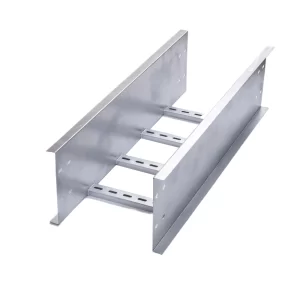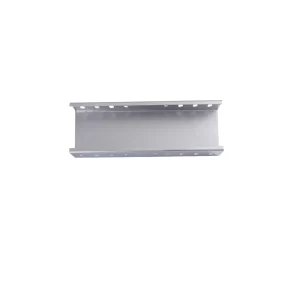There are three primary types of cable trays commonly used in various industries and applications: Ladder Cable Trays, Solid Bottom Cable Trays, and Perforated Cable Trays.

Ladder Cable Trays
Ladder cable trays are characterized by their open design, consisting of two side rails connected by rungs or cross-members at regular intervals. This open structure offers several advantages. Firstly, it provides excellent ventilation for the cables, allowing heat to dissipate easily. This is especially important in applications where cables generate a significant amount of heat, such as in large data centers or industrial facilities. For example, in a data center filled with servers and networking equipment, the use of ladder cable trays helps maintain optimal temperatures for the cables, reducing the risk of overheating and potential damage.
Secondly, the open design of ladder trays makes cable installation and maintenance straightforward. Technicians can easily access and add or remove cables as needed. However, the open nature also means that the cables are more exposed to the environment and potential physical damage.
Solid Bottom Cable Trays
Solid bottom cable trays, as the name suggests, have a continuous, unperforated bottom. This design offers greater protection to the cables from dust, debris, and physical impacts. They are often preferred in environments where there is a higher risk of contamination or where the cables need to be shielded from external elements.
For instance, in a manufacturing plant with a lot of airborne particulates or in an outdoor setting exposed to the elements, solid bottom trays can prevent the cables from being damaged or affected by dirt and moisture. However, the lack of ventilation in solid bottom trays can potentially lead to heat build-up if not managed properly.

Perforated Cable Trays
Perforated cable trays have a bottom with numerous small holes or perforations. This design strikes a balance between ventilation and cable protection. The perforations allow for some air circulation while still providing a degree of shielding for the cables.
They are suitable for a wide range of applications where a compromise between heat dissipation and protection is necessary. For example, in commercial buildings with mixed cable types and varying heat loads, perforated trays can effectively manage the cable environment.
In conclusion, each of the three main types of cable trays – ladder, solid bottom, and perforated – has its unique features and benefits, and the choice depends on the specific requirements of the installation environment, cable type, and maintenance considerations. Understanding these differences is crucial for ensuring efficient and reliable cable management in any given project.

